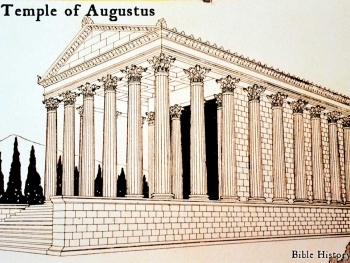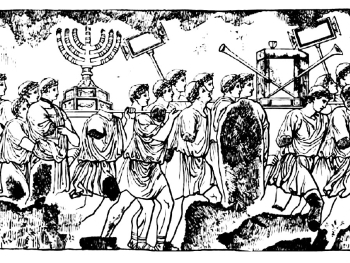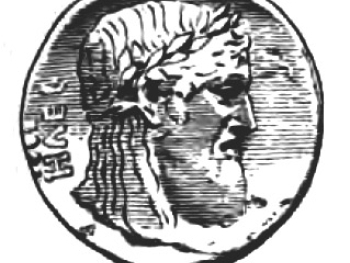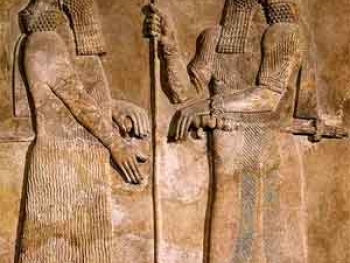
The Huldah Gates, located on the southern wall of the Temple Mount in Jerusalem, are a significant archaeological and historical feature. These gates served as entrances and exits for worshippers ascending to the Temple during the Second Temple period. A curious observation arises when comparing modern photos of the gates with ancient replicas: the number of arches seems to differ. While some ancient models show two arches for both the entrance and exit, modern photos of the southern wall reveal three arches at the location of the entrance.
So, what accounts for this discrepancy? Are we dealing with an error in the replicas, changes made over time, or a deeper historical mystery? Let’s explore the history and significance of the Huldah Gates to uncover the answer.
Understanding the Huldah Gates
The Huldah Gates, named after the prophetess Huldah (2 Kings 22:14), were part of the southern approach to the Temple Mount during the Second Temple period. These gates were used by worshippers to ascend to the Temple via underground passageways.
- Double Gate: This gate served as the exit for worshippers leaving the Temple. It consists of two arches.
- Triple Gate: This gate served as the entrance, allowing worshippers to ascend to the Temple Mount. It consists of three arches.
Why Do Replicas Show Two Arches for Both Gates?
The discrepancy likely stems from the historical models and interpretations used in creating the replicas. Let’s examine possible reasons:
- Incomplete Archaeological Knowledge
Early reconstructions of Jerusalem and the Temple Mount relied on limited archaeological evidence. Some ancient models, like those from the 19th and early 20th centuries, were created before comprehensive excavations revealed the true layout of the gates. This could explain why certain models inaccurately depicted both gates with two arches. - Wear and Modification Over Time
The modern southern wall has undergone significant changes since the Second Temple period. After the Temple's destruction in 70 CE, the area was repurposed, and architectural features like arches could have been altered or repurposed. In some cases, replicas might represent an earlier or alternative phase of construction that differed from what we see today. - Simplified Depictions
Some replicas or models may have intentionally simplified the gates for artistic or practical reasons. For instance, focusing on the functional concept of "double" and "triple" gates without strict adherence to the number of visible arches.
Historical Evidence of the Gates
- Second Temple Period Descriptions
Historical texts, such as those by Josephus, describe the southern gates leading to the Temple Mount. He refers to the gates but does not provide detailed accounts of their architectural features. The lack of precise written records may have contributed to inconsistencies in later depictions. - Archaeological Discoveries
Modern excavations have confirmed that the Double Gate indeed had two arches and the Triple Gate had three arches during the Second Temple period. These gates were connected to passageways leading to the Temple Mount.- The Triple Gate's arches are still visible today, although they are blocked off.
- The Double Gate's southern entrance is partially obscured by later constructions, but its original two-arched structure remains evident.
- Medieval and Ottoman Modifications
During the Byzantine, Islamic, and Ottoman periods, the Temple Mount underwent significant changes. Some features of the southern wall, including the Huldah Gates, were incorporated into new structures, potentially altering their appearance. These modifications might explain why the arches seen today differ slightly from those depicted in some replicas.
Significance of the Gates in Jewish Worship
The Huldah Gates were not merely functional structures; they held symbolic and spiritual significance:
- The gates provided a sacred transition for worshippers entering the Temple Mount.
- The separation of entrance (Triple Gate) and exit (Double Gate) may have helped manage the flow of worshippers and preserved a sense of order and sanctity.
- The gates' placement on the southern wall aligned with the pilgrimage route taken by many worshippers traveling from the City of David and surrounding areas.
What Are We Missing?
It seems unlikely that a well-researched replica would make such an obvious error as omitting one of the Triple Gate’s arches. Instead, the discrepancy may arise from the following:
- Phase of Construction Represented
The gates may have undergone multiple phases of construction during the Second Temple period. Some replicas could represent an earlier phase when the Triple Gate had a different configuration or fewer visible arches. - Cultural or Artistic Interpretation
The creators of replicas may have relied on incomplete knowledge or chosen to simplify details for clarity, focusing on the symbolic "double" and "triple" designations rather than precise architectural details. - Perspective in Photographs
Modern photos sometimes emphasize features of the southern wall that were not as prominent in ancient times due to later modifications or changes in the surrounding landscape.
The Huldah Gates remain a fascinating testament to the ingenuity and faith of the Second Temple period. While ancient replicas and modern photos may differ in their portrayal of the gates, this discrepancy highlights the evolving understanding of Jerusalem's history and archaeology.
Far from being an error, the differences remind us that our knowledge of ancient sites is continually growing. Every model, photograph, and excavation adds another piece to the puzzle, helping us appreciate the rich history of the Temple Mount and its surroundings.
If you have further questions about the Huldah Gates or other archaeological mysteries, feel free to ask in the comments or explore our other articles on biblical history and archaeology!
Jerusalem Temple In First Century Jerusalem Temple Archaeology Biblical Archaeology Jerusalem Bible Jerusalem Bible and archaeology Huldah Gates Temple Mount history Temple Mount Jerusalem archaeology Southern wall Temple Mount Biblical architecture Second Temple period Second Temple Archaeological replicas Ancient Jerusalem gates City of David Biblical archaeological discoveries













